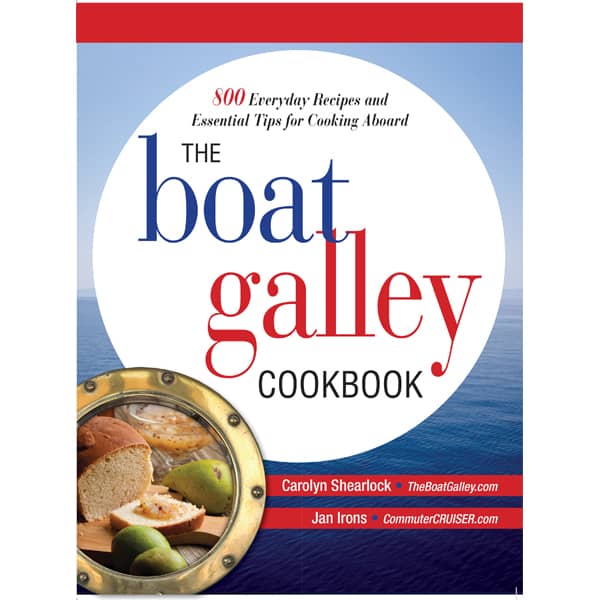Using plastic bags, cling wraps and aluminum foil to store food has two basic problems: they’re environmentally unfriendly and the boxes of them take up a lot of storage space.
There is a better way: Etee Wraps. Etee wraps are made from organic cotton impregnated with beeswax and other organic/natural resins and compounds. They stick to themselves far better than any plastic cling wrap and are slightly breathable so that condensation doesn’t pool against vegetables and gasses escape.
You can buy Etee wraps on Amazon:
A couple of years ago, I tried some other beeswax wraps and wasn’t really impressed as they just didn’t stick to themselves well enough to truly be useful. The Etees stick much better, I think because they don’t rely solely on beeswax but resins as well.
Besides taking up less space to store since you can reuse them and being better than generating more plastic trash, there’s a bonus: my cut veggies last a few days longer when I wrap them with an Etee than when I use plastic or aluminum foil. Cheese also does better.
If food gets on one, you just wash it off and let it dry before reusing. Mild soap is okay; using cool water will prolong their life (hot water will soften and remove a bit of the beeswax).

I have been using them for cut veggies and some leftovers. I’ve even tossed them over Dave’s sandwich to keep it from drying out when a friend stopped by just as I put lunch on the table. They also work well if you store veggies out of the refrigerator — wrap carrots and celery in them to keep them from drying out; there is just enough air flow to keep condensation from forming and causing the carrots or celery to rot.
They’re great for keeping a cut lemon or lime, or half a grapefruit or orange. The company suggests using them to wrap homemade bread and cookies; I haven’t tried this yet.
They are great for cheese, again doing much better than putting a cut piece of cheese in a Ziploc. It’s like having a wax casing around the cheese that keeps re-forming itself every time you cut a piece off.
I’ve dedicated one wrap to use on onions. It has picked up a bit of onion smell, but nothing overpowering.
They should not be used on raw meat but are great to cover bowls and pans. They’ll stick to most surfaces (some plastics are just a little too slick) and to themselves. Because they stick to themselves so well, it’s not a problem to use them on plastic bowls since I can get a good tight fit just pressing one on itself.

All my wraps are still going strong with over three month’s use — they are literally showing no wear. The company says that they’ll last anywhere from four months to a year, depending on the amount and type of usage. I did a quick cost comparison against Ziploc bags and found they were roughly comparable, depending on exactly how many uses you get from an Etee and how often you reuse a Ziploc.
The beeswax and resins make them naturally “sticky” so that they stick to themselves or the dish you are covering. To activate, wad one up and roll it in your hands (the cooler the temperature, the more you’ll have to roll it around; I’ve noticed that I need to do very little “activating” as it gets to be summer in the hot Florida Keys), then wrap it around the item.
I wondered if my hands would feel unbearably sticky after activating. Slightly sticky? Yes. But not annoyingly so — I often don’t immediately wash my hands to get it off. Just a quick rinse with water and a wipe on a towel takes it away.
You know how with cling wrap or aluminum foil, it’s hard to take something out — perhaps to use a little more of an onion or cucumber — and then reuse the wrap without it tearing yet still sticking? Not a problem with the Etees — if I’m using it on the same item, I don’t usually wash it (unless gunky to reactivate) but simply reactivate it and re-wrap.
You can buy Etee wraps on Amazon:
As an Amazon affiliate I earn through qualifying purchases. However, I recommend products based on my experience with them and not because I might make a few cents.

Carolyn Shearlock has lived aboard full-time for 17 years, splitting her time between a Tayana 37 monohull and a Gemini 105 catamaran. She’s cruised over 14,000 miles, from Pacific Mexico and Central America to Florida and the Bahamas, gaining firsthand experience with the joys and challenges of life on the water.
Through The Boat Galley, Carolyn has helped thousands of people explore, prepare for, and enjoy life afloat. She shares her expertise as an instructor at Cruisers University, in leading boating publications, and through her bestselling book, The Boat Galley Cookbook. She is passionate about helping others embark on their liveaboard journey—making life on the water simpler, safer, and more enjoyable.
Simplify meal prep on board with proven strategies for provisioning, maximizing fridge space, and cooking delicious meals aboard your boat.










Janet Ward says
etee now makes three sizes of food bags in the same fabric as the wraps. Mine just arrived today so haven’t tried them yet but I think they will be great. We are starting America’s Great Loop from Lake Michigan in August and I am finding the Boat Galley such a great resource. Thanks Carolyn!
Janet Ward
M/V At Last, 3100 TIARA
Cathy Berry says
These are amazing. I have been using them at home for over a year, just bought some more and have taken some to the boat. The bread I buy tends to mold fairly quickly. Now I wrap it in the beeswax cloth, stick that in the plastic bread bag and it lasts a couple weeks or so. I eat dense whole grain bread, my husband does not, so, sometimes it’s around for awhile!! Buying muslim cloth bags for the veggies is another good trick. Carrots, greens, etc. hold up longer when wrapped in cloth. If the start to dry out, you can rinse them in water and stick them back in the bag.
Judith C says
I just love mine. I need to order more and now that I know they have bags that’s even better.
Dave Skolnick (S/V Auspicious) says
We bought a set on Carolyn’s say so and have been very pleased. We’re still making the transition. Habits are hard to change. We’ll be getting more and will watch our consumption of Ziplocs.
Terey says
How are they in humid climates? Super sticky?
Carolyn Shearlock says
I use them in the Florida Keys and Bahamas — hot and humid — and while they stick well to dishes and themselves, they aren’t a problem for sticking to hands or feeling yucky.